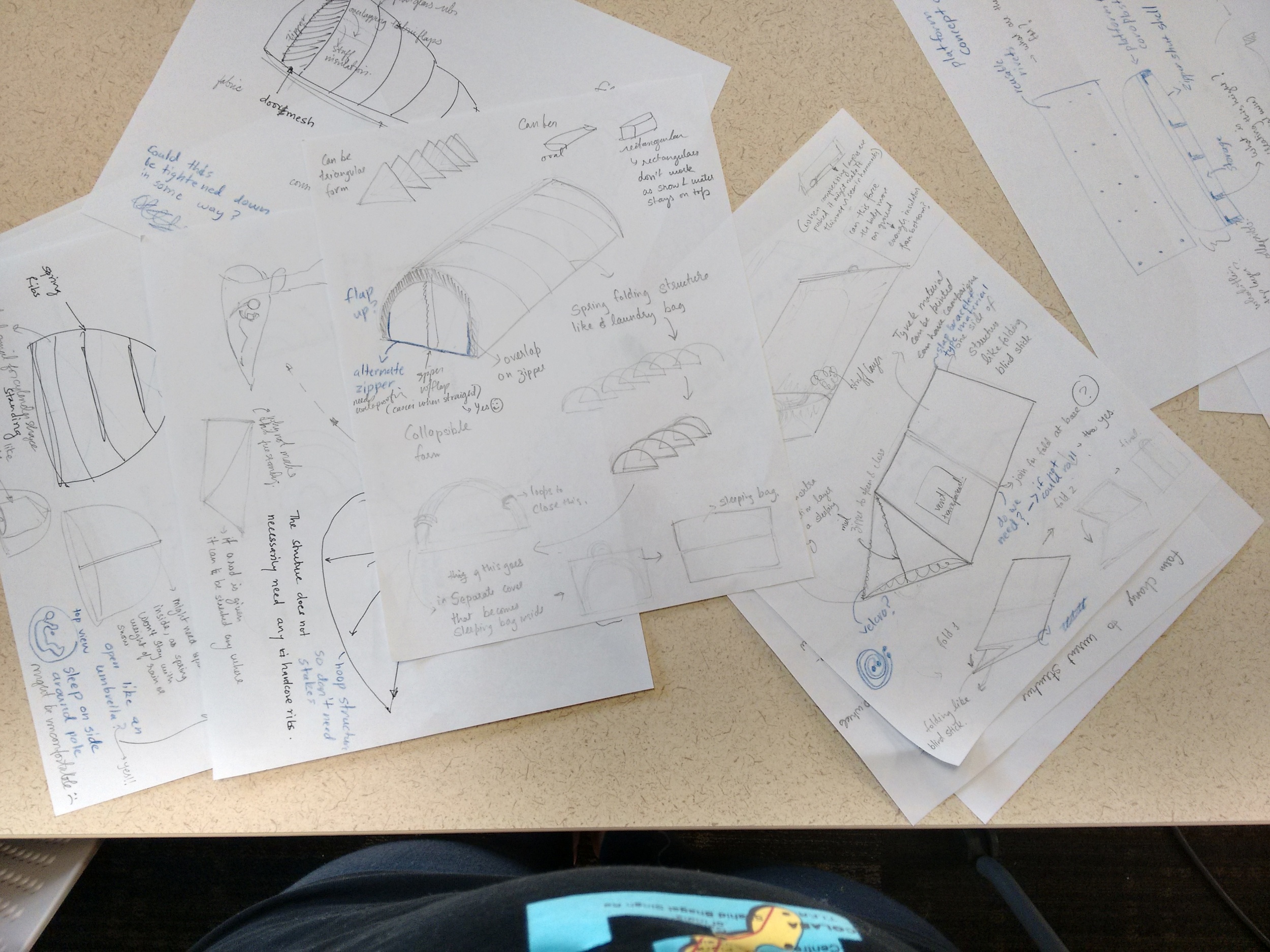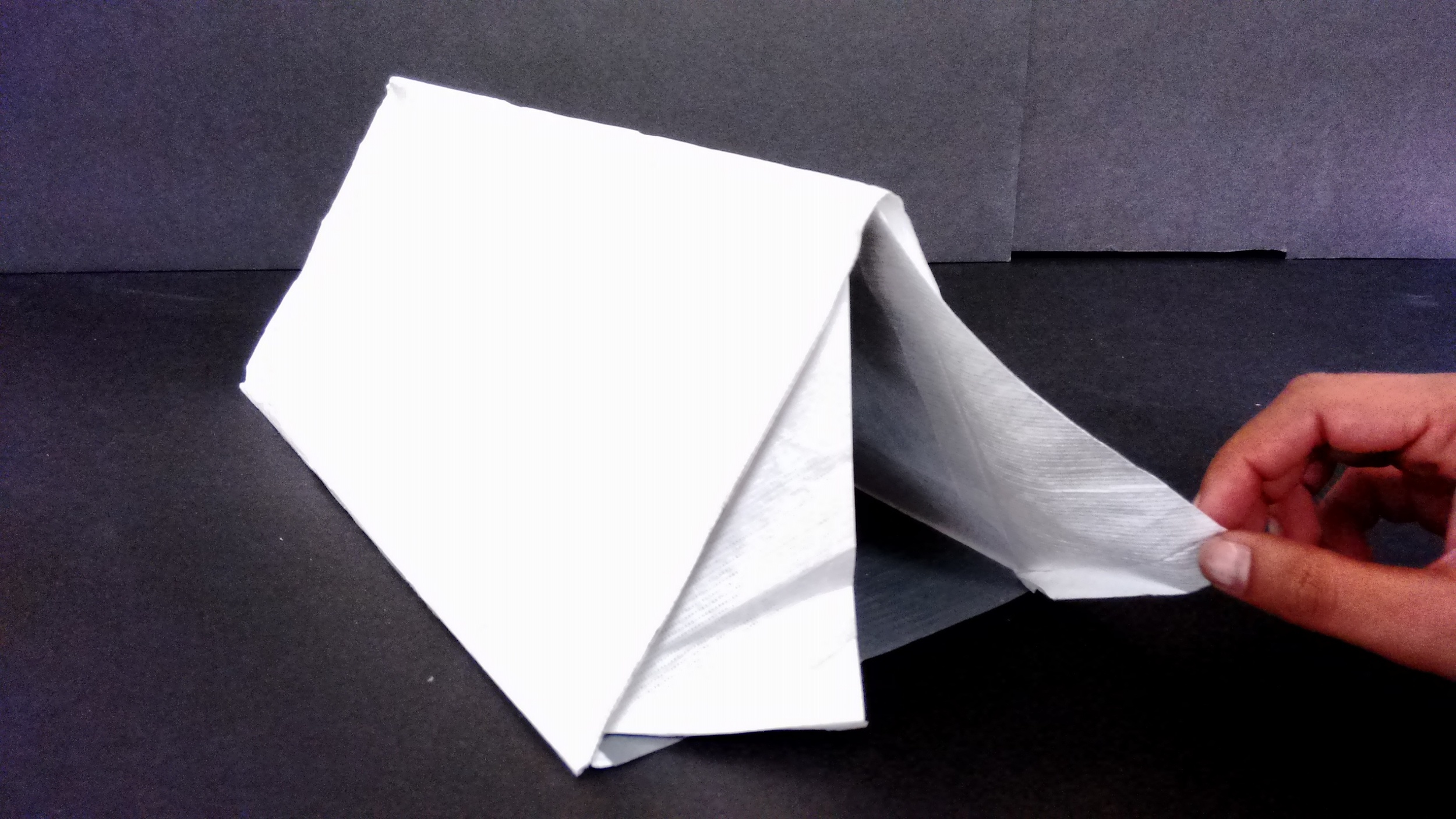The Team
Priya Ganadas, Creative Technologist
Linh Thi Do, Project Development & Management
Alex Surasky-Ysasi, Social Innovation & Engineering
Rajlakshmee, Design Research & Strategy
The Challenge
There are about 600,000 homeless individuals in the US, and this winter they will face life-threatening hypothermia that can set in between 32-50°F. Shelters ideally offer protection but are not always an available option for a variety of reasons.
User Research & Insights
REASONS PEOPLE GAVE FOR SLEEPING OUT INSTEAD OF GOING TO A SHELTER:
- Shelters can be dirty and many have rodents and lice
- Conflict with other individuals sleeping in shelters
- Feel insecure both for their person and their possessions
- Can't sleep with their significant other because shelters are single sex
- Drug/alcohol addiction
Homeless individuals encapsulate an extremely diverse group of people and they approach their survival in many different ways. The team worked to speak with currently and formerly homeless individuals of various races, ages and living in different circumstances to understand the challenges they face in the winter. We also spoke with Allegheny County Department of Human Services, Operation Safety Net and Community Housing Partners to understand their requirements as stakeholders who serve homeless individuals and might be purchasing such shelters.
Through Operation Safety Net we had the opportunity to visit some of the "camps" around Pittsburgh where groups of homeless individuals live. We learned what they currently do to get through the winter and learned what worked and what was problematic with their current set ups.
Homeless Individual Needs
- Protect from weather
- Retain heat
- Easy to use
- Portable
- Avoid drawing attention
Organizations Offering Shelter
- Safe
- Inexpensive
- Durable
- Provides outdoor shelter when at maximum capacity
Based on all the conversations and interviews the team realized that there were three main things that would differentiate the concepts we would seek to develop from what existed on the market. Our design would be:
Suited to the Urban Environment
Affordable and Robust
Intuitive to Use
Initial Concept from 5 day hack-a-thon
Ideation
With the research in hand, the team began to brainstorm about different forms the shelter could take. We took inspiration from the ultralight backpacking community, collapsible shapes in nature and even camera equipment.
The team realized over the course of ideation and through conversations with an outdoor gear maker, we realized that we would need two components in our system; an other protective shelter to keep out wind, rain and snow and an inner, insulating piece that would retain body heat. Early on in the project we determined that we would aim to keep body heat in, rather than attempt to create an external heat source as the logistics of ensuring sufficient power and fuel were clearly very complicated and had dangerous consequences should they become inaccessible. With the ideas we developed, we then began to explore materials in order to prove out the basic feasibility of the forms we had developed.
Material Selection
Many tents and sleeping bags use light, technologically-advanced materials because of the contexts in which they are used. However, for our uses being lightweight and packing small were not as much of a priority so the team wanted to explore the insulation properties of different materials including newspaper, plastic bags, corrugate plastic, cardboard and foam. So we designed and set up a basic experiment using glass jars filled with hot water. We then performed tests to measure quantitative relative performance.
We had narrowed it down to two possible shapes at this point in the process and also wanted to compare them to see if there was any significant difference in heat loss due to the outer shape of the structure.
Beta Concept
With all the team had learned, we pushed ahead to development and construction of a beta concept that we would take to our outdoor gear partner for full scale feasibility testing. The concept passed with flying colors.
Next Steps
We are currently working with our partners in Pittsburgh to organize, finance and manufacture 50-100 shelters to test in the coming winter. Based on that testing and design refine, the plan is to scale Satellite Shelter from there. To learn more about the work, see where we have been recognized and get the latest news check out satelliteshelter.com





















